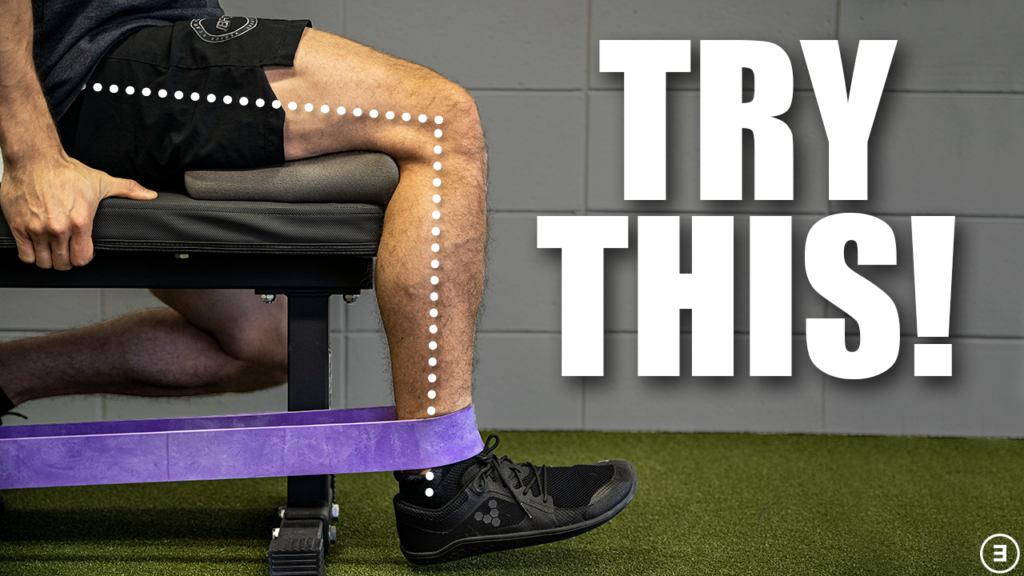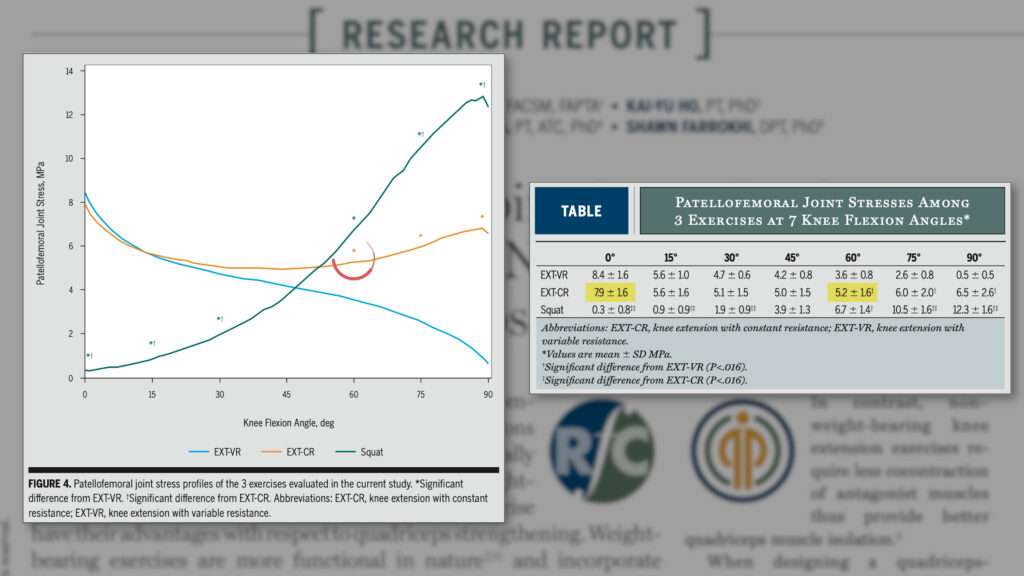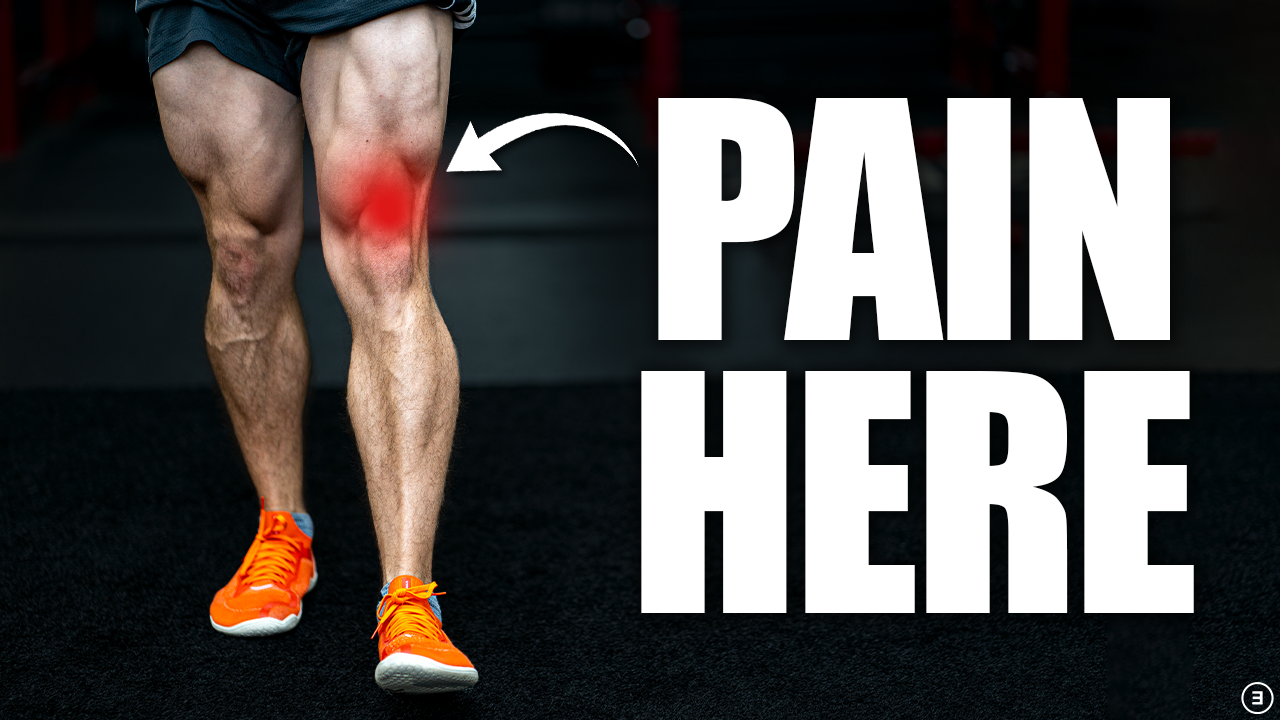The purpose of this blog is to show you how to properly set up, perform, and program banded leg extensions to maximize the strength and hypertrophy of your quads.
Looking to improve your strength, range of motion, and power to enhance your function and performance? Check out our Knee Resilience program!
Common Mistake With Banded Leg Extensions
Most people perform banded leg extensions throughout the full arc of motion to mimic a leg extension machine. The issue with this method is that the resistance is greatest when the knee is completely straight and almost non-existent when the knee is bent, which is actually where you want it to be the most challenging. This is true of bands, ankle weights, or machines that don’t have a fixed resistance throughout.
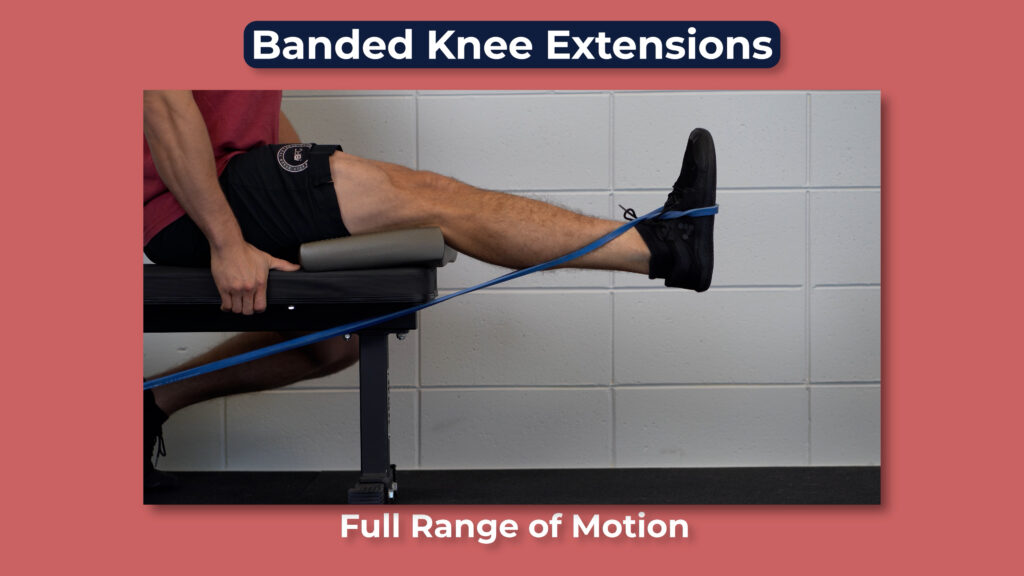
A Better Banded Leg Extension
The execution isn’t necessarily wrong, but a more optimal option may be performing isometrics between 90 and 60 degrees of knee flexion.
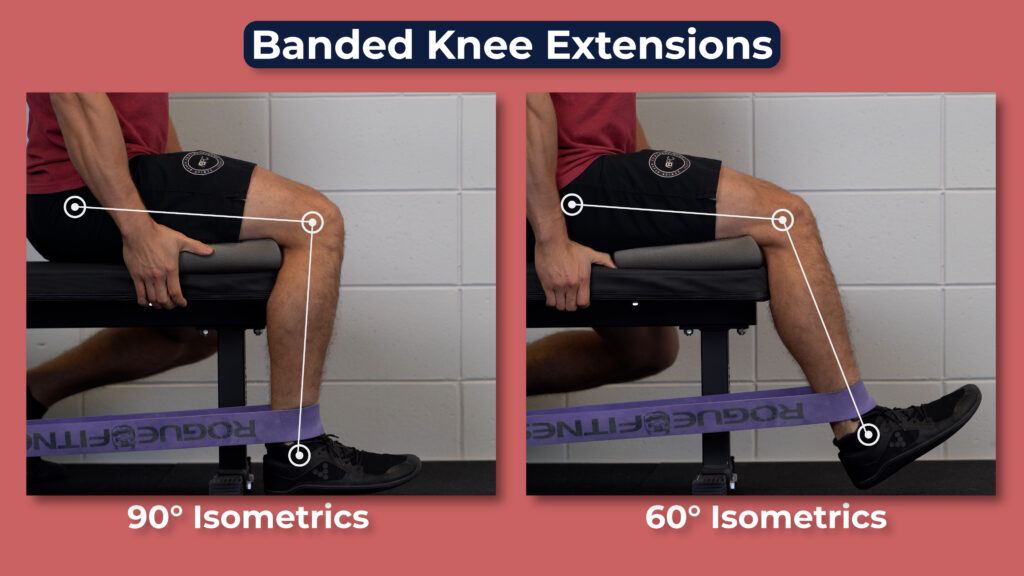
A systematic review by Oranchuk et al in 2019 found that isometrics at longer muscle lengths lead to greater hypertrophy and improve strength throughout the ROM, which results in greater transference to dynamic performance. Additionally, high intensity isometrics at long muscle lengths improve tendon stiffness and thickness, which are advantageous.
A recent paper by Pedrosa et al in 2021 also found favorable muscle adaptations when performing leg extensions at long muscle lengths.
Lastly, Gary Smidt in 1973 determined that the most knee extension torque occurs around 60 degrees of knee flexion (meaning it’s where you’re the strongest).
ACL & Patellofemoral Pain
There are some considerations for rehabilitation as well.
Beynnon et al in 1995 discovered that an isometric leg extension at 60 or 90 degrees of knee flexion at 80% intensity created zero strain on the anterior cruciate ligament (ACL).
Powers et al in 2014 determined that patellofemoral joint stress was 30% less at 60 degrees of knee flexion compared to the knee being completely straight, which may be helpful for individuals experiencing patellofemoral pain.
Execution & Programming for Banded Leg Extensions
There are a few ways to set this up for a pure isometric contraction.
You can use a resistance band, towel, belt, strap, or whatever other equipment you have that works. You might need to put a towel in front of your shin for comfort and under your distal thigh (or a pad) for better positioning.
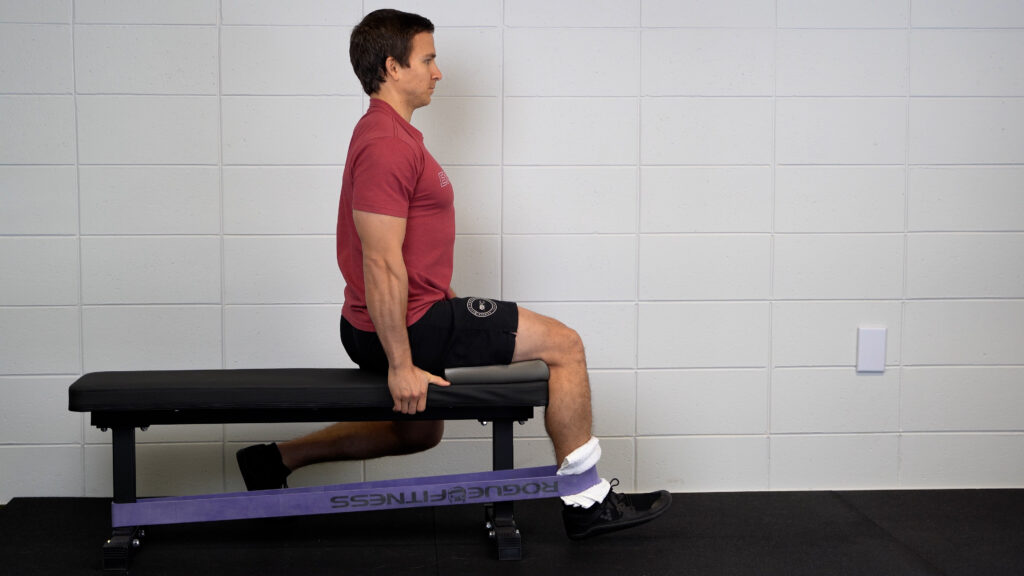
The systematic review by Oranchuk found that more volume and longer holds lead to more hypertrophy, and isometrics at 70% intensity or higher are beneficial for tendon adaptations. Therefore, an easy prescription is 3-5 sets of 30-45 seconds at 70% intensity or higher.
You can also do a myo-rep set by kicking into the band for 20-25 reps to burnout your quads, resting 10 seconds, performing another 5 reps, and repeating that process for 2-3 more sets.
If you want to try to improve your rate of force development, you’re better off performing lower rep sets for 3-5 second holds.
If you train legs twice per week, you can implement these 1 to 2 times per week.
Summary
Theres’s absolutely nothing wrong with doing banded leg extensions throughout the full range of motion, but isometrics between 90 and 60 degrees of knee flexion might lead to greater changes in hypertrophy, strength, and tendon stiffness, and may be more suitable for certain individuals with an ACL reconstruction or patellofemoral pain because there’s zero strain on the ACL and patellofemoral joint stress is less.
If you still want to work terminal knee extension, you can do banded TKEs with the same myo-rep parameters or use the normal full range of motion banded leg extensions.
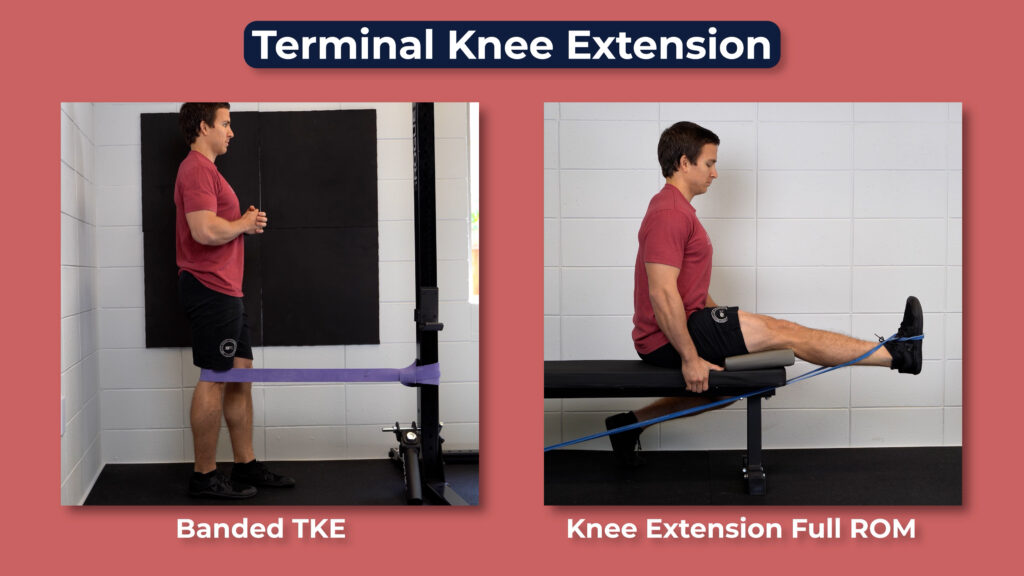
Don’t forget to check out our Knee Resilience Program!
Are Leg Extensions Bad For Your Knees?, Are Leg Extensions Safe After ACLR?, Patellar Tendinopathy
Thanks for reading. Check out the video and please leave any questions or comments below.


